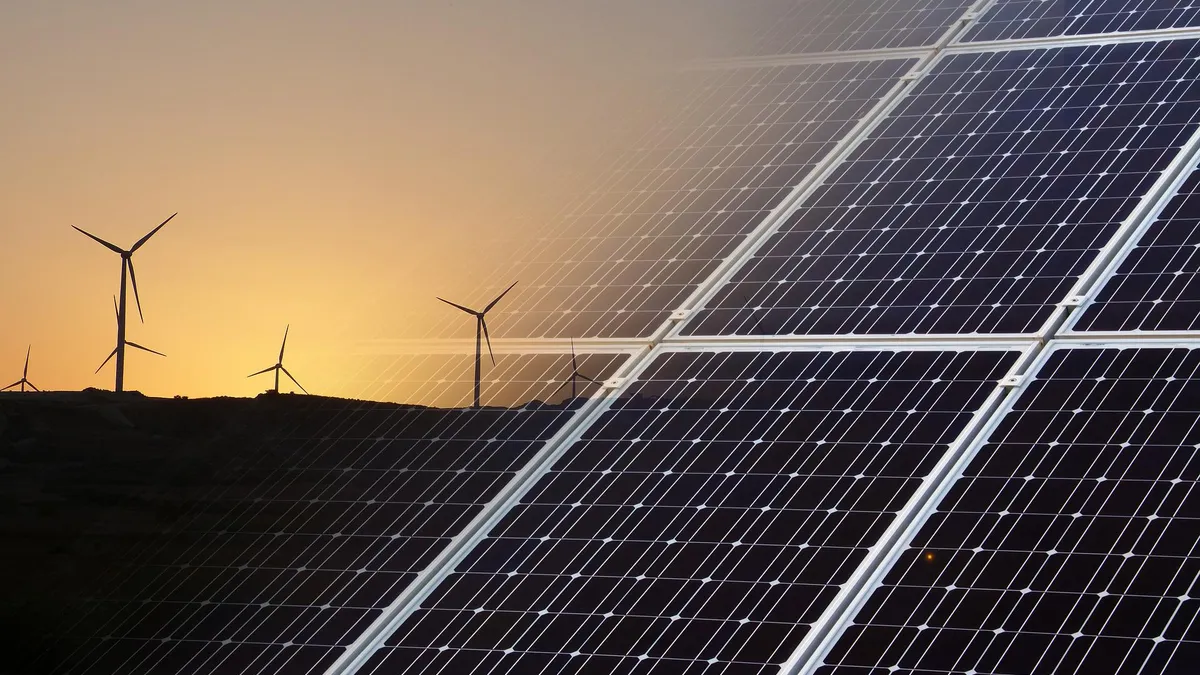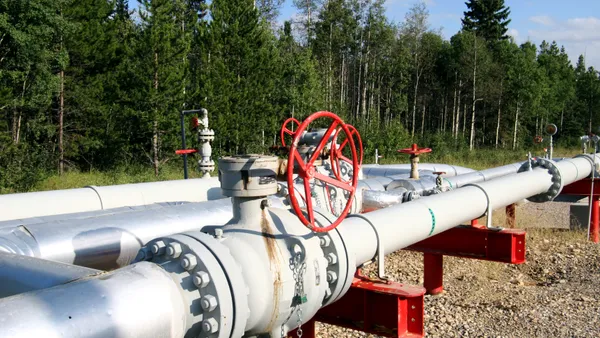Dive Brief:
-
In spite of ongoing challenges associated with high shipping and materials costs, First Solar saw an increase of solar module sales during the second quarter, the company announced on Thursday.
-
The company has outstanding orders for 44 GW of solar modules to be delivered through 2026, and is currently sold out through the end of 2023, according to First Solar CEO Mark Widmar.
-
Widmar said he was encouraged by Wednesday’s release of the Inflation Reduction Act, which he indicated could spur First Solar to expand its manufacturing operations within the U.S.
Dive Insight:
The Democrats’ Inflation Reduction Act is days old, but it’s already spurring excitement among solar industry leaders.
Widmar told investors during Thursday’s second quarter earnings call that while the company was still reviewing the bill’s details, the creation of an advanced manufacturing tax credit as proposed in the bill would prompt First Solar to seriously consider additional manufacturing capacity in the U.S.
“We had previously stated we were evaluating the potential for capacity expansion, but noted that we first required clarity on domestic solar policy,” Widmar said. “In light of these latest developments and should the Inflation Reduction Act get passed with consistent language on solar-related tax credits, we plan to pivot quickly to reevaluate U.S. manufacturing expansion.”
He later said it seemed possible for First Solar to build at least one new utility-scale factory in the U.S., which he estimated could be built in 24 months or less because the company had already informed its vendors of plans to build a new factory. The company has also contemplated a partnership with SunPower to manufacture residential solar modules, and a second new utility-scale factory could also be a possibility, he said.
First Solar has so far sold 27.1 GW of solar modules this year, and has begun taking orders for 2026 on account of having already sold out its existing manufacturing capacity through 2023 and most of 2024, Widmar said. Most of the 10.4 GW of modules First Solar sold in the second quarter are scheduled for delivery in 2024-2026, Widmar said.
Widmar noted that First Solar is also seeing greater geographic diversity in its orders, with particularly strong interest from European buyers. The war in Ukraine, he noted, has led to an urgent need to deploy more renewable energy in Europe. At the same time, he said, solar developers are looking to diversify their supply chains in response to ongoing disruptions to Chinese supplies. This growth in demand helped to spur a $254 million increase in sales from the first to second quarters of the year, Widmar said, bringing second quarter net sales to $621 million.
The release of a bifacial CadTel semiconductor, which First Solar is currently working to bring to market, could spur additional growth for the company, Widmar said. However he cautioned that the solar industry could still anticipate supply chain challenges in the months to come. While shipping costs have improved, he said the company has encountered growing port congestion as First Solar and other companies seek to redirect shippments for the West Coast to the East Coast to avoid ongoing labor disputes.
“For example, the queue of ships looking to berth at the Port of Savannah has recently increased to 30 vessels, up from zero in the previous quarter,” Widmar said. “While transit times from Asia to the United States have improved, they remain well above the pre-pandemic averages. In fact, combined with challenges such as port congestion and blank sailings, has led to an estimated 12% reduction in global shipping capacity.”













